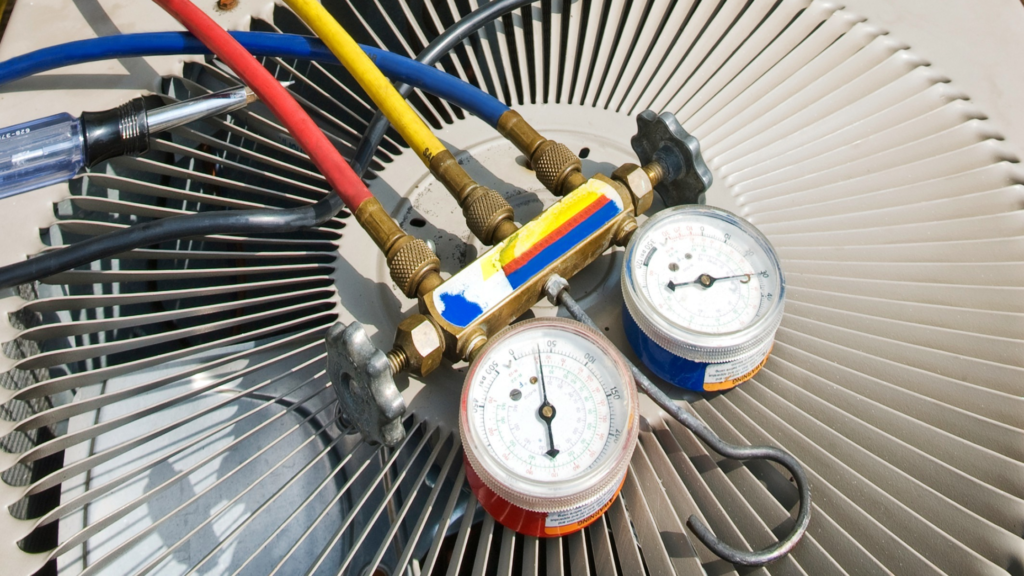Freon, a commonly used term for several refrigerants, is a colorless and odorless gas that plays an integral role in air conditioning systems, including air conditioners and refrigerators. In an air conditioner, Freon is used to transfer heat from the inside of your home to the outside in order to enable the cooling process.
While Freon is a very efficient and effective refrigerant, it has been probably linked to ozone depletion. Because of its risk to the environment, some types of Freon are being phased out to facilitate replacement with more environmentally friendly refrigerants.
How Freon Works in Your Air Conditioner
Refrigerants operate on a cycle of compression, condensation, expansion, and evaporation to regulate the temperature. Your air conditioning system contains an intricate network of components and coils designed to enable the circulation of refrigerants.
When warm air inside your home enters the system, Freon absorbs the head by transforming from a low-pressure gas to a high-pressure, high-temperature one. It’s then compressed, which causes it to release the absorbed heat quickly. As it cools, it condenses into a liquid that then flows through an expansion valve. The process lowers its temperature and causes Freon to evaporate; as this occurs, the cooling cycle continues to function as intended.
Understanding the Different Types of Freon
While the name may be used interchangeably, not all refrigerants are the same. In fact, there are three varieties commonly used in the United States:
- R-12: This was the original Freon used in air conditioners and refrigerators, which was eventually linked to ozone depletion. R-12 coolant is no longer manufactured in the United States at all.
- R-22: A newer type of coolant that’s less harmful to the ozone layer, R-22 is, unfortunately, still a greenhouse gas that’s in the process of being phased out in favor of less hazardous refrigerants.
- R-410A: More environmentally friendly than R-22, this is a blend of two different gasses designed to work efficiently while causing less harm to the planet as a whole.
The Future of Freon
As the world at large and industry professionals alike become more aware of the very real environmental impact of Freon, other countries are also phasing out its use at a rapid clip. In the US, R-22 will be banned for new air conditioners, refrigerators, and other cooling appliances beginning in 2023.
Fortunately, the prevalence of newer, more environmentally-friendly refrigerants available today are just as efficient, but less harmful. Still, if you’re considering buying a new conditioner, it’s wise to determine which refrigerant it uses.
Signs of Freon Issues
As a homeowner, understanding Freon and the role it plays in keeping your home cool is essential. If you experience any issues with your AC unit or suspect a Freon leak, the best way to ensure both the safety of your home and its cooling effectiveness is to call in the experts.
Low levels of Freon within your AC system can be the result of leaks, which are, unfortunately, relatively common. Inadequate refrigerant levels can be the root cause of reduced cooling efficiency and increased energy consumption that can add up quickly on your monthly electric bill. It’s always a good idea to be on the lookout for signs of trouble, from decreased cooling performance to hissing sounds near the indoor unit or ice buildup on the coils. Should you suspect your system is leaking Freon, consulting with a knowledgeable, professional HVAC technician for inspection and repair is essential.
For expert advice and assistance with all your air conditioning needs, including Freon-related concerns, reach out to AMI Air. Our experienced technicians are always ready to provide top-notch services that ensure your home stays cool and comfortable year-round.

